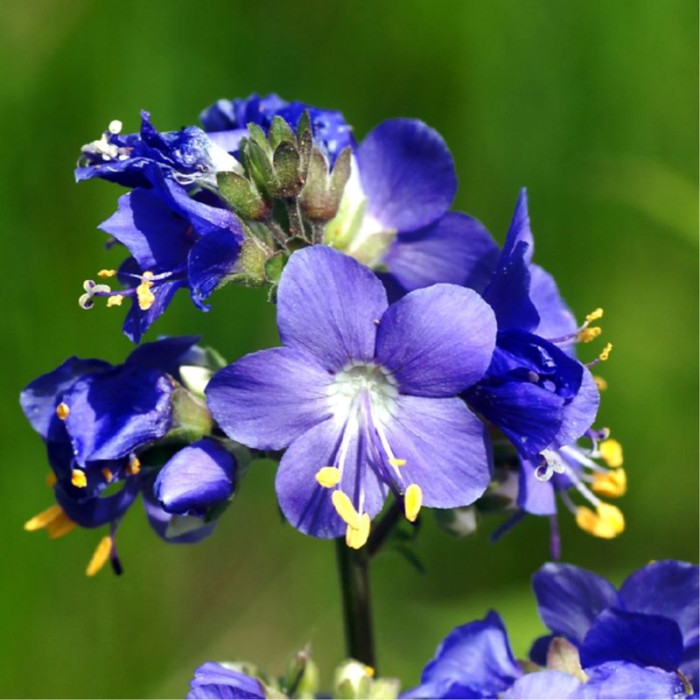Jacob's-ladder or Greek valerian / Polemonium caeruleum - is a perennial herbaceous plant. Stem single, hollow, erect, glandular, height from 35 to 120 cm. It is used to treat lung diseases, gastric and duodenal ulcers, and also as a sedative. The flowers are blue, rarely white, up to 1.5 cm in diameter, collected in terminal paniculate inflorescences up to 15 cm long, 10 times more sedative than valerian!
The leaves are pinnate, alternate, petiolate - lower, sessile-upper, consist of 15-25 leaflets with pointed ends, lanceolate. The flowers are bisexual, large, bright blue, five-parted, rarely white, collected in racemes, which are collected in a loose panicle. Bell-shaped whisk. The petals of the corolla are 2-2.6 times longer than the sepals. The flower has five stamens. At the base of the petals on the inside are nectaries.
Flowers produce a lot of nectar. Nectaries look like a flat bowl in which nectar accumulates. It is readily available to bees. One flower on average releases up to 3 mg of nectar with a sugar content of 22-45%. Many flowers are formed - up to 200 on each plant.
It blooms from the second year of life, within fifteen to twenty days of the first half of summer. Gives a lot of pollen and nectar. Solid thickets of cyanosis in terms of honey productivity range from 80 to 100 kg per hectare.

No questions about this product, be the first and ask your question.








